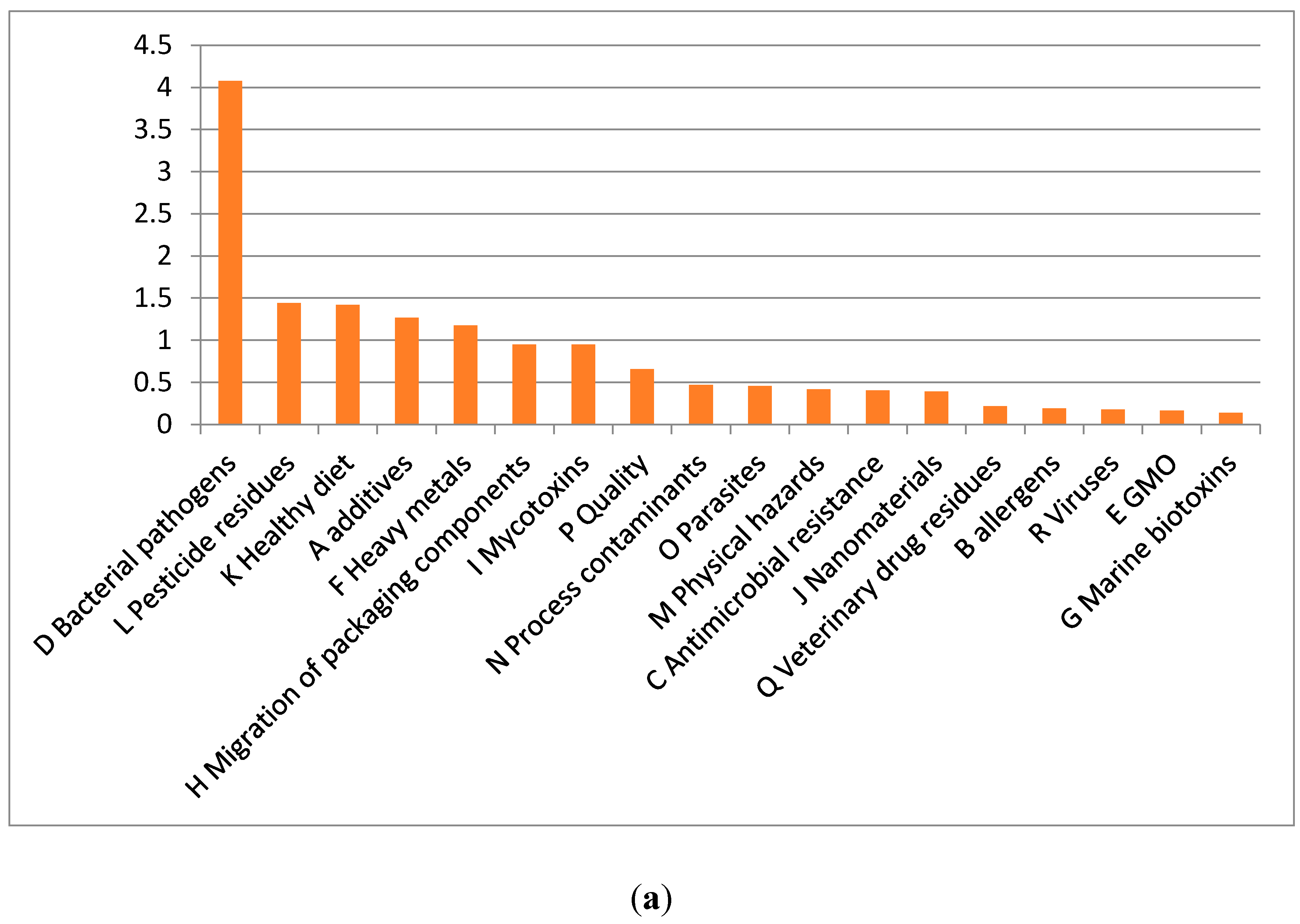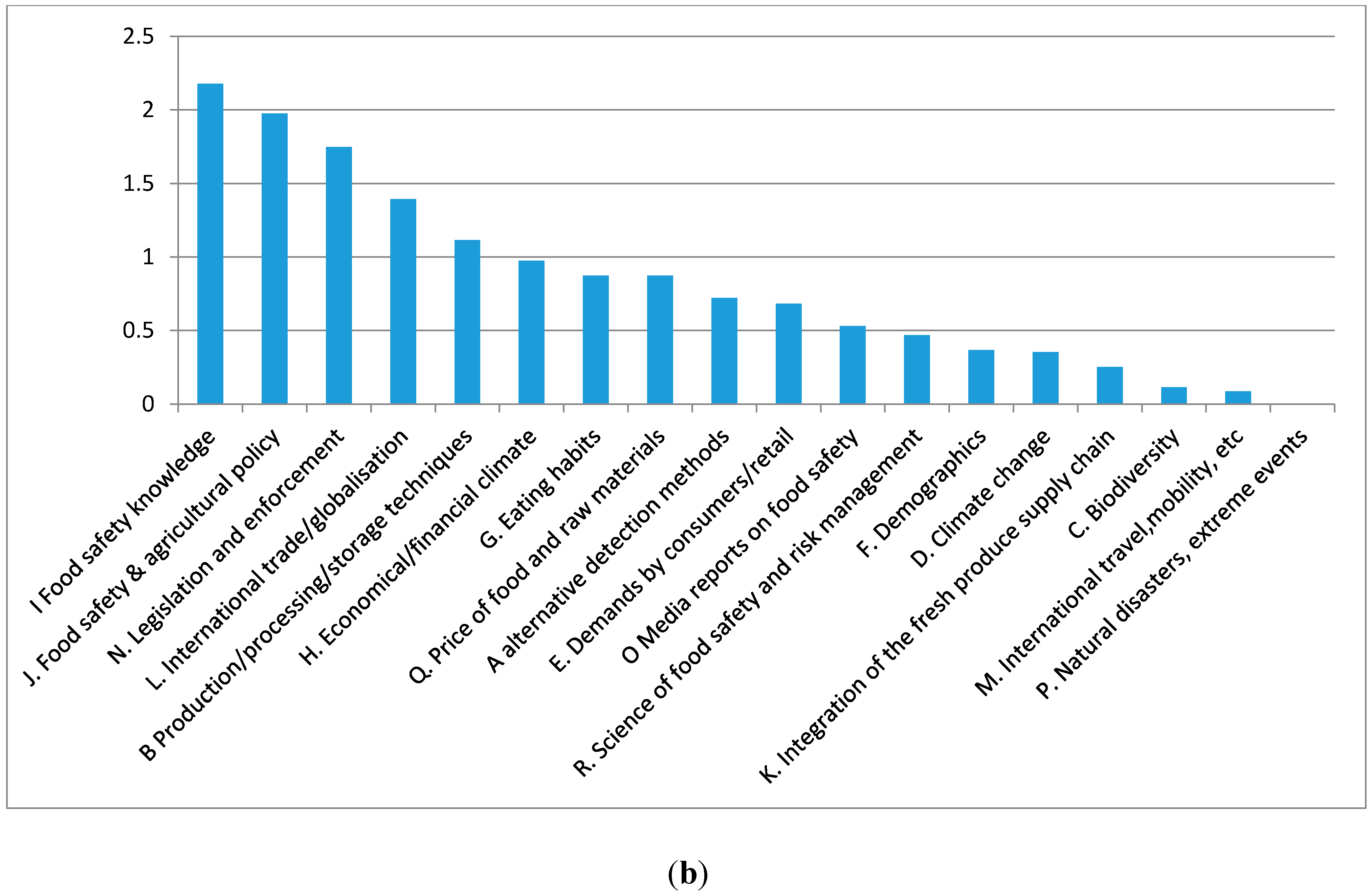Food Safety, a Global Challenge
1. Introduction
2. Safety Aspects of Foods in Low and Middle Income Countries


3. Pathogenic Escherichia coli and Salmonella, an Emerging Issue in Fresh Produce
4. Water Treatment Technologies
5. Sampling and Testing
6. Vulnerable Consumer Groups and Eating Habits
References
- Grace, D. Food safety in low and middle income countries. Int. J. Environ. Res. Public Health 2015, 12, 10490–10507. [Google Scholar] [CrossRef] [PubMed]
- Van Boxstael, S.; Habib, I.; Jacxsens, L.; de Vocht, M.; Baert, L.; van de Perre, E.; Rajkovic, A.; Lopez-Galvez, F.; Sampers, I.; Spanoghe, P.; et al. Food safety issues in fresh produce: Bacterial pathogens, viruses and pesticide residues indicated as major concerns by stakeholders in the fresh produce chain. Food Control 2013, 32, 190–197. [Google Scholar] [CrossRef]
- Akindolire, M.A.; Babalola, O.O.; Ateba, C.N. detection of antibiotic resistant staphylococcus aureus from milk: A public health implication. Int. J. Environ. Res. Public Health 2015, 12, 10254–10275. [Google Scholar] [CrossRef] [PubMed]
- Zhang, L.; Lu, L.; Shu, L.; Chen, J.; Zou, Q.; Zhou, Q.; Gu, Y.; Zhao, J.; Lin, X. Association between the hygiene index values of live fresh aquatic products and food-borne diarrhea in the population of the ningbo area in China. Int. J. Environ. Res. Public Health 2015, 12, 9154–9168. [Google Scholar] [CrossRef] [PubMed]
- Ravva, S.V.; Korn, A. Effect of neem (Azadirachta indica) on the survival of Escherichia coli O157:H7 in dairy manure. Int. J. Environ. Res. Public Health 2015, 12, 7794–7803. [Google Scholar] [CrossRef] [PubMed]
- Johannessen, G.S.; Eckner, K.F.; Heiberg, N.; Monshaugen, M.; Begum, M.; Økland, M.; Høgåsen, H.R. Occurrence of Escherichia coli, Campylobcter, Salmonella and shiga-toxin producing E. coli in Norwegian primary strawberry production. Int. J. Environ. Res. Public Health 2015, 12, 6919–6932. [Google Scholar] [CrossRef] [PubMed]
- Ceuppens, S.; Johannessen, G.S.; Allende, A.; Tondo, E.C.; El-Tahan, F.; Sampers, I.; Jacxsens, L.; Uyttendaele, M. Risk factors for Salmonella, shiga toxin-producing Escherichia coli and Campylobacter occurrence in primary production of leafy greens and strawberries. Int. J. Environ. Res. Public Health 2015, 12, 9809–9831. [Google Scholar] [CrossRef] [PubMed]
- Allende, A.; Monaghan, J. Irrigation water quality for leafy crops: A perspective of risks and potential solutions. Int. J. Environ. Res. Public Health 2015, 12, 7457–7477. [Google Scholar] [CrossRef] [PubMed]
- Holvoet, K.; Jacxsens, L.; Sampers, I.; Uyttendaele, M. Insight into prevalence and distribution of microbial contamination to evaluate water management in the fresh produce processing industry. J. Food Prot. 2012, 75, 671–681. [Google Scholar] [CrossRef] [PubMed]
- Banach, J.L.; Sampers, I.; van Haute, S.; van der Fels-Klerx, H.J. Effect of Disinfectants on preventing the cross-contamination of pathogens in fresh produce washing water. Int. J. Environ. Res. Public Health 2015, 12, 8658–8677. [Google Scholar] [CrossRef] [PubMed]
- Petri, E.; Rodríguez, M.; García, S. Evaluation of combined disinfection methods for reducing Escherichia coli O157:H7 population on fresh-cut vegetables. Int. J. Environ. Res. Public Health 2015, 12, 8678–8690. [Google Scholar] [CrossRef] [PubMed]
- ISO/TS 13136:2012. Microbiology of Food and Animal Feed—Real-Time Polymerase Chain Reaction (PCR)-Based Method for The Detection of Food-Borne Pathogens—Horizontal Method for The Detection of Shiga Toxinproducing Escherichia coli (STEC) and The Determination of O157, O111, O26, O103 and O145 Serogroups; ISO: Geneva, Switzerland, 2012. [Google Scholar]
- Verhaegen, B.; de Reu, K.; Heyndrickx, M.; de Zutter, L. comparison of six chromogenic agar media for the isolation of a broad variety of non-O157 shigatoxin-producing Escherichia coli (STEC) serogroups. Int. J. Environ. Res. Public Health 2015, 12, 6965–6978. [Google Scholar] [CrossRef] [PubMed]
- Cocolin, L.; Ercolini, D. Zooming into food-associated microbial consortia: A “cultural” evolution. Curr. Opin. Food Sci. 2015, 2, 43–50. [Google Scholar] [CrossRef]
- Ceuppens, S.; Delbeke, S.; de Coninck, D.; Boussemaere, J.; Boon, N.; Uyttendaele, M. Characterization of the bacterial community naturally present on commercially grown basil leaves: evaluation of sample preparation prior to culture-independent techniques. Int. J. Environ. Res. Public Health 2015, 12, 10171–10197. [Google Scholar] [CrossRef] [PubMed]
- Lund, B.M. Microbiological food safety for vulnerable people. Int. J. Environ. Res. Public Health 2015, 12, 10117–10132. [Google Scholar] [CrossRef] [PubMed]
- Hutchinson, M.; Harrison, D.; Richardson, I.; Tchórzewska, M. A method for the preparation of chicken liver pâté that reliably destroys Campylobacters. Int. J. Environ. Res. Public Health 2015, 12, 4652–4669. [Google Scholar] [CrossRef] [PubMed]
© 2015 by the authors; licensee MDPI, Basel, Switzerland. This article is an open access article distributed under the terms and conditions of the Creative Commons by Attribution (CC-BY) license (http://creativecommons.org/licenses/by/4.0/).
Share and Cite
Uyttendaele, M.; Franz, E.; Schlüter, O. Food Safety, a Global Challenge. Int. J. Environ. Res. Public Health 2016, 13, 67. https://doi.org/10.3390/ijerph13010067
Uyttendaele M, Franz E, Schlüter O. Food Safety, a Global Challenge. International Journal of Environmental Research and Public Health. 2016; 13(1):67. https://doi.org/10.3390/ijerph13010067
Chicago/Turabian StyleUyttendaele, Mieke, Eelco Franz, and Oliver Schlüter. 2016. "Food Safety, a Global Challenge" International Journal of Environmental Research and Public Health 13, no. 1: 67. https://doi.org/10.3390/ijerph13010067
APA StyleUyttendaele, M., Franz, E., & Schlüter, O. (2016). Food Safety, a Global Challenge. International Journal of Environmental Research and Public Health, 13(1), 67. https://doi.org/10.3390/ijerph13010067





